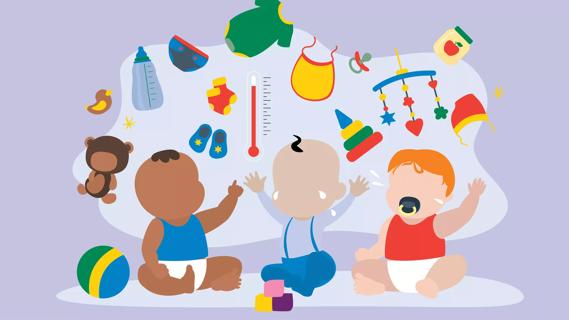Motivate your kids with the right kind of praise and rewards

We all need motivation to get things done, whether it’s hitting the gym or tackling a big project at work. And for kids, motivation is hard to come by. Clean their room? What for? Do their homework? But why?
Advertisement
Cleveland Clinic is a non-profit academic medical center. Advertising on our site helps support our mission. We do not endorse non-Cleveland Clinic products or services. Policy
That’s why many parents use rewards. Pediatric psychologist Emily Mudd, PhD, explains how to use rewards and other tactics to get your kids off the couch.
If you know how motivation works in the brain, you can better understand why kids do — or don’t do — certain tasks.
Intrinsic motivation means that you do an activity because it’s enjoyable. For kids, this might be video games or listening to their favorite music.
“When something is intrinsically motivating, you do it because it’s enjoyable and interesting,” says Dr. Mudd. “You’re not doing it to get a prize or receive recognition.”
Extrinsic motivation is the opposite. You do something not because you inherently enjoy it, but because you want an outside reward or outcome.
“With extrinsic motivation, a child might study for a biology test because they want a good grade, not because they simply enjoy biology, or studying,” explains Dr. Mudd. “The child’s motivation lies in the outcome they want: a good grade.”
“I often hear parents say that rewards are like bribes, which are wrong, but our society is built on rewards. They are all around us,” says Dr. Mudd. “We study to get an A on a test. We work to get a paycheck. If you weren’t being graded, you may not study as hard. If you didn’t get paid, you probably wouldn’t be as motivated to come to work.”
Advertisement
Rewards are a type of positive reinforcement, and they have their place in your parenting toolkit. “Certain tasks just aren’t intrinsically motivating for some children, like potty training, studying, or cleaning their room,” says Dr. Mudd.
This is where you use extrinsic motivation to encourage your child.
“You can offer your child rewards through something as simple as a sticker chart when they complete the desired task,” Dr. Mudd explains.
But there’s a right way to use rewards. Follow these tips.
“Use rewards for one specific behavior at a time,” says Dr. Mudd. If you’re using rewards for multiple things, your child may start to expect them for, well, everything. This can overwhelm the child — and it can be exhausting for the parent to try to maintain.
When you use extrinsic motivation (rewards), back it up with intrinsic motivation. Tell your child why the task is important. Use encouragement while they work toward their goal.
Praise the process, not the outcome. “If a child builds a block tower and it falls over, tell them you see how hard they worked to build the tower,” says Dr. Mudd. “Acknowledge how hard a child studied for a test, don’t focus on the final grade.”
Praising something the child has control over helps them build confidence. They start to believe that they are capable of doing hard things.
If your child is reaching for a reward long after she has mastered the task, the reward has lost its effect.
To prevent this, make the reward harder to obtain as your child makes progress. Start with something small that they can achieve. Once they master that skill, up the ante.
“As you make it harder to get the reward, make sure it’s not overwhelming to the child,” says Dr. Mudd. “Try to find a balance between making it too easy and too hard.”
Motivate your kids by giving them choices or extra family time rather than money.
“Make the child’s reward something that gives them a sense of control,” says Dr. Mudd. “This builds internal motivation because kids want to be heard and feel that they have a voice.”
Examples of non-monetary rewards include:
The SMART approach can help you set appropriate goals for your child.
SMART means the goal is:
“You want your child to have a goal he can achieve in a reasonable time period,” says Dr. Mudd. “For example, have him focus on math homework for 10 minute without interruptions, or have him clean his room before dinner. The right, specific goals will build your child’s internal resilience and motivation.”
Advertisement
If you’re trying to stop a bad behavior, don’t turn to rewards.
“Parents need to find out the ‘why’ behind a negative behavior,” says Dr. Mudd. “Connect with your child to figure out why they’re engaging in a behavior or acting out – is it lack of expressive language skills to communicate, feeling unheard, anxiety, etc- , rather than just rewarding them for not doing it.”
“People of all ages love praise,” says Dr. Mudd. “Studies show that most adults find receiving praise from their manager at work matters more than an increase in pay. Being recognized for your work is incredibly important, whether you’re a child or an adult.”
When you praise your child, make it specific and about the process. Saying, “I love how you organized your room. I see you worked hard on that,” is more effective than a generic “Good job!” And not saying anything at all because they’re “expected to do it” is a motivation killer for anyone.
“Kids hear what they do wrong all day long,” says Dr. Mudd. “Noticing their good behavior — and saying something about it — is one of the best motivators of all.”
Advertisement
Learn more about our editorial process.
Advertisement

By disrupting a child’s ability to think and act for themselves, snowplow parents run the risk of delaying their child’s ability to learn

It’s important to share the news in an honest and age-appropriate way and to open the lines of communication going forward

The need for sleep often takes a back seat for teens, but they need eight to 10 hours of sleep to stay mentally healthy, strengthen their brains and prevent injury

Early weight gain can lead to health issues like heart disease, diabetes and cancer

You can help strengthen your child’s immune system by focusing on hand washing and staying up-to-date on their vaccines

Severe and debilitating headaches can affect the quality of your child’s life

Build a lifestyle focused on smart eating and exercise, not numbers on a scale

Kids are never too young to learn about body autonomy

If you’re feeling short of breath, sleep can be tough — propping yourself up or sleeping on your side may help

If you fear the unknown or find yourself needing reassurance often, you may identify with this attachment style

If you’re looking to boost your gut health, it’s better to get fiber from whole foods